How to transfer files between virtual machines and PCs on VMware and VirtualBox
Virtual machines (VMs) allow running another operating system in an isolated environment. Because virtual machines are isolated by nature, you cannot directly access files on your host PC.
Although this may seem complicated, if you want to move files back from the VM to the server, you don't need to go through many different steps because the process is relatively simple.
How to copy files from virtual machine to local machine
A virtual machine is a software environment that simulates the hardware needed to install an operating system (OS). In general, this allows you to install a new operating system on top of an existing operating system, just like an application.
The data sharing options between the host PC and the guest operating system running in the virtual machine are what you might expect:
- Drag and drop (also known as copy and paste)
- USB
- Shared folder
Each method is ideally suited for a specific data type and intended use. For example, copy and paste is the best way to share text and small files, such as copying code from the browser on the host PC to the terminal session in the guest operating system.
Many users don't know how to transfer files from VirtualBox to the server; Even if they do, some people don't take this option because they feel it's unsafe or a hassle to configure. However, there are several methods to transfer files on virtual machines running on Oracle VirtualBox and VMware Workstation Pro.
1. Drag and drop and share Clipboard
The simplest option for transferring files between a host PC and a virtual machine is to set up a shared clipboard and drag and drop. This will allow the use of a common clipboard, meaning you will be able to freely copy/paste text/images and files between the virtual machine and your host PC.
This method of sharing data between the guest operating system and the host is best suited for smaller files. You can also share text strings, URLs, and the like. Stay away from large files, although you have other options.
How to transfer files from Virtualbox to server using shared clipboard option
If you're using Oracle VirtualBox, you can set up a shared clipboard and drag and drop in just a few quick steps:
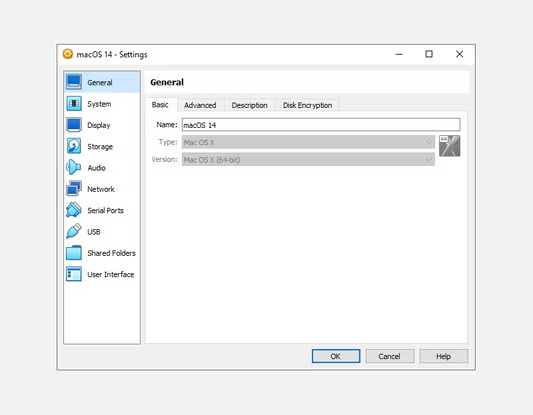
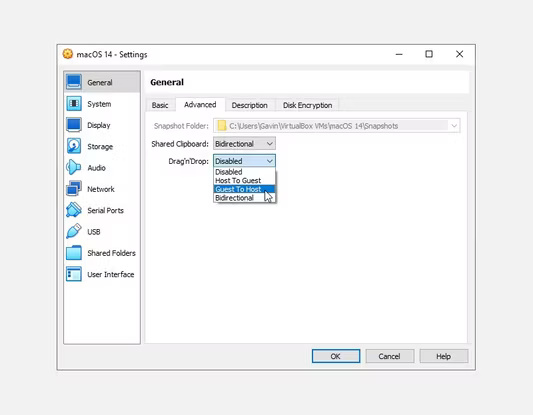
- Select the virtual machine, right-click and select Settings .
- In the pop-up window, click General and then select the Advanced tab .
- You will now see the Shared Clipboard and Drag'n'Drop drop-down options .
- You can choose from Host to Guest, Guest to Host and Bidirectional . There is also a default option, Disabled , that prevents attempts to copy files to VirtualBox.
Select Bidirectional in both drop-down boxes to enable bidirectional file sharing.
How to copy files to VMware Workstation Pro by dragging and dropping
Similar to VirtualBox functionality, you can also set up shared clipboards or enable drag and drop in VMware. You may need to install the VMware Tools package, which provides additional features.
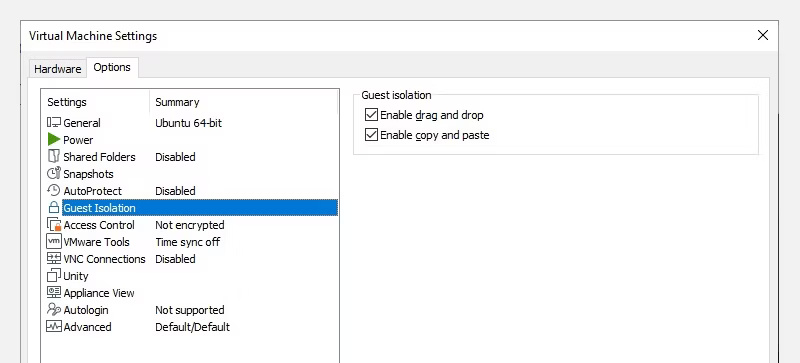
- With VMware Workstation Pro running, navigate to VM > Install VMware Tools . Instructions will be available during the installation process if you have not downloaded VMware Tools.
- Enable copy and paste in VM > Settings > Options .
- Select Guest Isolation .
- Here, select Enable copy and paste and Enable drag and drop .
- Confirm with OK .
2. Copy files to the virtual machine using USB
Using USB (like an external hard drive or SSD) to transfer data between two physical machines is a long-standing tradition. Although not ideal, USB can transfer files between the host PC and the virtual machine.
Given the compact size of USB, this is a useful way to transfer larger files from device to virtual machine.
How to transfer files to VirtualBox from USB
You will need to enable USB access to USB devices from within VirtualBox. To do this, you need to download the VirtualBox Extension Pack.
After downloading the extension pack:
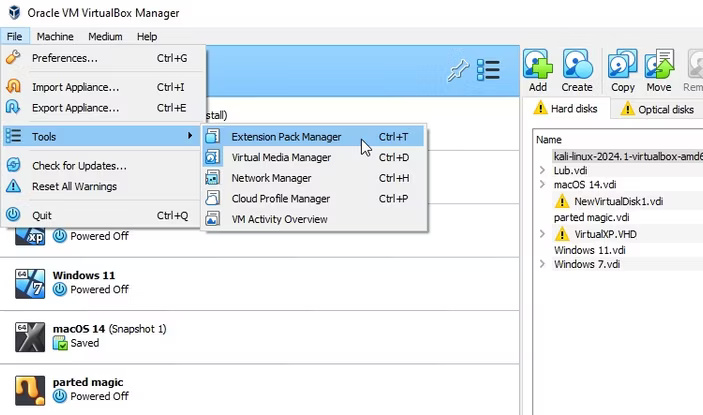
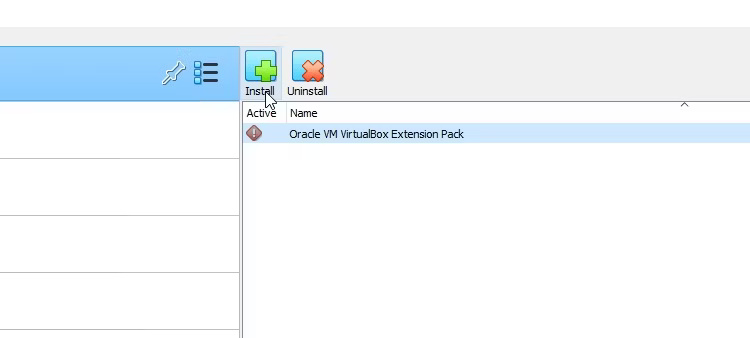
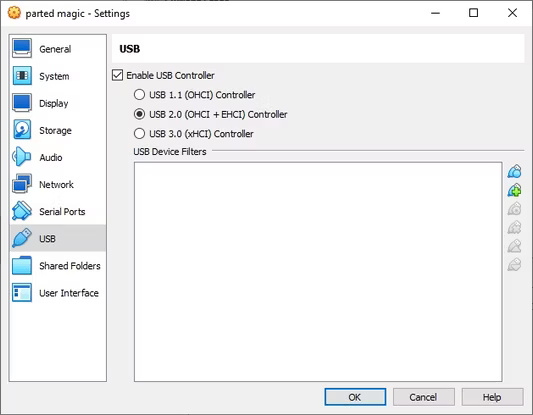
- Plug in the USB device you want to use.
- Launch VirtualBox. Go to File > Tools > Extension Pack Manager.
- Browse to the downloaded Extension Pack, click Open , then when prompted, click Install .
- Follow the prompts to complete the process. You can then check to confirm USB is enabled in Settings > USB .
- Right-click on the VM you intend to use and select Settings > USB .
- Click + , then browse for USB devices that will be available when launching the VM. Additional drives can be added in the same way.
You can then use the USB device to copy files to VirtualBox.
How to transfer files to VMware Workstation Pro from USB
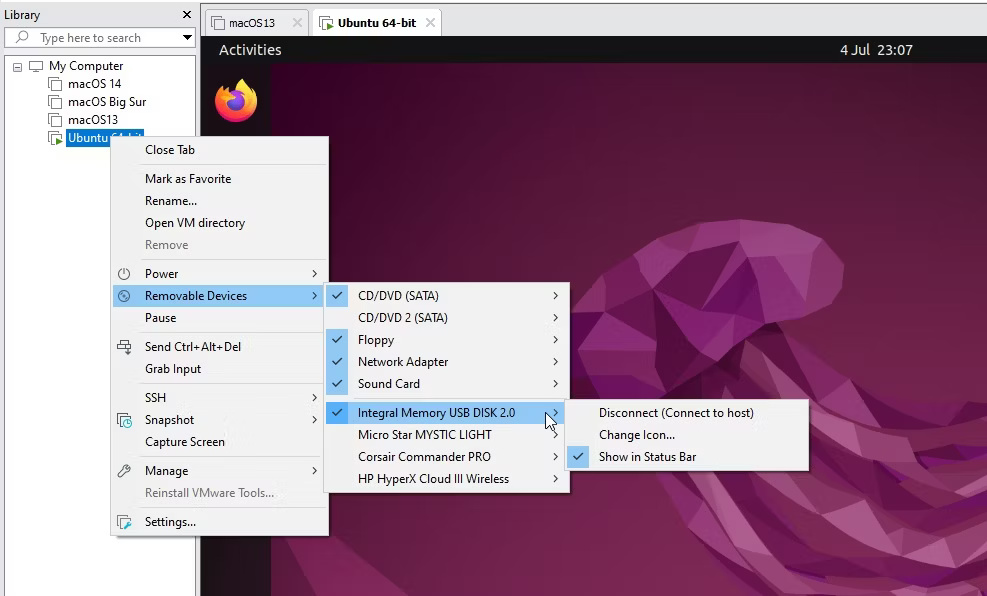
Here is a simpler process to enable USB on VMWare Workstation Pro.
- Locate the active virtual machine in the virtual machine library, found on the left side of the screen.
- Right-click the virtual machine, then go to Removable Devices > [USB device name] > Connect (Disconnect from host).
The USB will now be available in the virtual machine. Follow the same procedure to disconnect the USB from the virtual machine and reconnect it to the host device.
You should read it
- Fix the error of not running VMware virtual machine, VirtualBox on Windows 10
- Compare VirtualBox, VMWare and Hyper-V
- How to run macOS on Windows 10 using VMware Workstation Player
- How to convert virtual machines from VMware to VirtualBox and vice versa
- Stealing virtual machines and virtual machine data
- Instructions for speeding up virtual machines in full set
- Learn about virtual machines
- Instructions for fixing errors do not install VMware Tools
May be interested
- Stealing virtual machines and virtual machine data
 there are basically two ways to access a virtual disk file (.vmdk) of a virtual machine, which is using the esx service console or vsphere / vmware infrastructure client with a built-in data warehouse browser.
there are basically two ways to access a virtual disk file (.vmdk) of a virtual machine, which is using the esx service console or vsphere / vmware infrastructure client with a built-in data warehouse browser. - Fix the error of not running VMware virtual machine, VirtualBox on Windows 10
 there are many errors when running vmware, virtualbox on windows 10, but typically there are hyper-v, raw-mode is unavailable courtesy of hyper-v and wmware player and device / credential guard are not compatible.
there are many errors when running vmware, virtualbox on windows 10, but typically there are hyper-v, raw-mode is unavailable courtesy of hyper-v and wmware player and device / credential guard are not compatible. - Instructions for creating virtual machines with VirtualBox quickly and easily
 virtual machines help users experience other operating systems without having to install them directly on a real machine. a typical example is virtualbox, a software that supports multiple platforms such as windows, linux, and macos.
virtual machines help users experience other operating systems without having to install them directly on a real machine. a typical example is virtualbox, a software that supports multiple platforms such as windows, linux, and macos. - How to run macOS on Windows 10 using VMware Workstation Player
 you can install macos on windows using virtualbox. but if you prefer vmware to virtualbox, you can create a macos monterey virtual machine using vmware that works exactly like virtualbox.
you can install macos on windows using virtualbox. but if you prefer vmware to virtualbox, you can create a macos monterey virtual machine using vmware that works exactly like virtualbox. - Instructions on how to install virtual machines with VMware
 vmware workstation helps you create multiple virtual machines running different types of operating systems from windows to linux on a real machine, but the effects of that virtual machine do not affect the real machine.
vmware workstation helps you create multiple virtual machines running different types of operating systems from windows to linux on a real machine, but the effects of that virtual machine do not affect the real machine. - What is Oracle VirtualBox? What can be done with it?
 to create these virtual machines, we use a program called hypervisor. one of the most recommended hypervisors is oracle's virtualbox.
to create these virtual machines, we use a program called hypervisor. one of the most recommended hypervisors is oracle's virtualbox. - How to run macOS on Windows 10 in a virtual machine
 even if you are a loyal fan of microsoft and windows, it doesn't mean you can't use another operating system on windows. and the best way to do that is to use your current operating system and a virtual machine. in this tutorial, i will show you how to run macos on windows in a virtual machine.
even if you are a loyal fan of microsoft and windows, it doesn't mean you can't use another operating system on windows. and the best way to do that is to use your current operating system and a virtual machine. in this tutorial, i will show you how to run macos on windows in a virtual machine. - How to import and export OVA files in Virtualbox
 virtualbox has a graphical application that you can use to create and manage your virtual machines easily on a desktop or workstation.
virtualbox has a graphical application that you can use to create and manage your virtual machines easily on a desktop or workstation. - How to change the UUID in VirtualBox HDD
 you have tried copying, moving, or backing up and restoring your virtualbox virtual machines. but now one or more of these virtual machines are unable to boot because of some uuid related issues.
you have tried copying, moving, or backing up and restoring your virtualbox virtual machines. but now one or more of these virtual machines are unable to boot because of some uuid related issues. - How to fix Not enough physical memory on VMware
 vmware is a software for creating virtual machines on a computer, enabling you to run multiple operating systems in parallel. however, when a not enough physical memory error occurs on vmware, users will not be able to install the software.
vmware is a software for creating virtual machines on a computer, enabling you to run multiple operating systems in parallel. however, when a not enough physical memory error occurs on vmware, users will not be able to install the software.










 What are Slack Lists? How to use it to organize work?
What are Slack Lists? How to use it to organize work? Did you know there are two different Microsoft Defender applications?
Did you know there are two different Microsoft Defender applications? Top best handheld game consoles 2024
Top best handheld game consoles 2024 Why does error 403 appear? How to prepare?
Why does error 403 appear? How to prepare? 6 reasons why Microsoft Edge's PDF reader is loved
6 reasons why Microsoft Edge's PDF reader is loved How to see your friends' recent online visits on Snapchat
How to see your friends' recent online visits on Snapchat